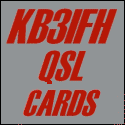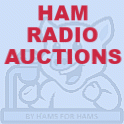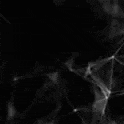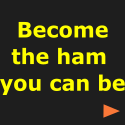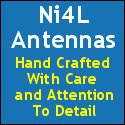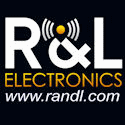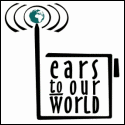Posts Tagged ‘hamr’
 Exploring Shortwave Radio Signals: A Peek into Non-Local Communications
Exploring Shortwave Radio Signals: A Peek into Non-Local Communications
Curious about what you can hear on shortwave ham radio? This video is a brief survey of the diverse world of communications on the shortwave spectrum. Expand your radio horizons and enhance your emergency communication preparedness by tuning in to the world of shortwave ham radio.
If you’ve started delving into radio communications beyond local stations and channels, like VHF and UHF, you’re in for a treat. Shortwave radio opens up a whole new realm of signals to explore, including emergency communications vital during natural disasters.
Shortwave radio covers a range of radio frequencies from 3 kHz to 30 MHz. This spectrum is home to a diverse array of radio signals that cater to various communication needs, making it a hub of activity and connectivity.
Within these high frequencies, you can tune in to a multitude of transmissions, from transoceanic air traffic control communications to the chatter of ships navigating the vast seas. Imagine hearing the voices of fishermen, much like those on your favorite reality TV shows about high-seas fishing adventures, along with military communications and the vibrant world of amateur radio enthusiasts.
One of the remarkable features of high-frequency (HF) radio is its ability to propagate signals over long distances, transcending line-of-sight limitations. This means that HF radio enables communication between different regions and even continents, fostering connectivity across vast distances.
During times of crisis and natural disasters, shortwave frequencies become invaluable for emergency communications. When local infrastructure falters or is disrupted, shortwave radio serves as a vital lifeline, facilitating critical two-way communications in and out of disaster-stricken areas.
Explore the fascinating realm of shortwave radio, where distant voices blend with essential information, bridging gaps and connecting communities in times of need. Uncover the power of HF radio to transcend boundaries and provide lifelines when they are needed most.
In this video, I give you a glimpse of the voice and data transmissions I pick up on my high-frequency amateur radio transceiver (in this video, an Icom IC-7000). In later videos, I will dive deeper into specific types of HF communications, such as aeronautical trans-oceanic signals.
 Go Back In Time – Vintage Film
Go Back In Time – Vintage Film
Turning back time to virtually witness a critical historic method of shortwave communication using the fundamental mode of continuous wave modulation. This is a film from 1944, teaching the basics of Morse code, for military comms.
What is the proper (and most efficient) technique for creating Morse code by hand, using a manual Morse code key? Ham radio operators find Morse code (and the ‘CW’ mode, or ‘Continuous Wave’ keying mode) very useful, even though Morse code is no longer required as part of the licensing process. Morse code is highly effective in weak-signal radio work. And, preppers love Morse code because it is the most efficient way to communicate when there is a major disaster that could wipe out the communications infrastructure.
While this military film is antique, the vintage information is timeless, as the material is applicable to Morse code, even today.
Credits: National Archives and Records Administration
Department of Defense. Department of the Army. Office of the Chief Signal Officer. (09/18/1947 – 02/28/1964)
ARC Identifier 36813 / Local Identifier 111-TF-3697. PRINCIPLES AND BASIC TECHNIQUE FOR GOOD, RHYTHMIC SENDING 0F MORSE CODE BY OPERATING THE HAND KEY.
Made possible by a donation from Mary Neff.
 1939 Film: Morse Code on HF in New Zealand (Historical)
1939 Film: Morse Code on HF in New Zealand (Historical)
Before modern radio broadcasting, the trails were being blazed both in public broadcast, but also critical links out of the local area. Here’s a side-look back in time…. in this 1939 Film: New Zealand Shortwave Communications; Morse code (CW)
The romance of the radiotelegraph service (in this video, the service in New Zealand) is a fascinating aspect of communication history. The use of shortwave, longwave, and medium frequency spectrum for communication, particularly through Morse code, played a significant role in connecting people across vast distances. This service utilized the high-frequency spectrum known as “shortwave” (from 3 MHz up to 30 MHz) as well as the longwave (30 kHz to 300 kHz) and medium frequency spectrum (300 kHz to 3 MHz).
This short film is from 1939, and captures the essence of communication at that time in history, to and from New Zealand using shortwaves and Morse code. It showcases the importance of the radiotelegraph service in enabling long-distance communication during that era. The transition from Morse code via spark-gap communications to continuous wave (CW) modulation marked a significant advancement in the technology and efficiency of radio communication.
It’s incredible to see how technology has evolved over the years, transforming the way we communicate and connect with each other globally. Films like these provide a glimpse into the past and remind us of the ingenuity and dedication of those who worked in the radiotelegraph service to ensure effective communication across the seas.
This film is a 1939 Government film scanned to 2K from a 16mm combined B/W reduction print.
 New to Amateur Radio? What is a Repeater?
New to Amateur Radio? What is a Repeater?
If you have not yet explored ham radio repeaters, this might be interesting to you.
What is an amateur radio repeater and how do they work?
In this video, with a non-amateur-radio viewer in mind, I chat about the very basic concepts of a repeater.
It is filmed in a relaxed, “ride along with me,” format.
Want to learn more about ham radio (amateur radio)?
Visit: http://nw7us.us/arrl
 1st Ever: August Olivia Digital Mode QSO Party Weekend – Aug 11-14 2023
1st Ever: August Olivia Digital Mode QSO Party Weekend – Aug 11-14 2023
Announcement:
OLIVIA DIGITAL MODE AUGUST 2023 QSO PARTY
Dates: August 11, 12, 13, 14 UTC
These are UTC dates,
starting at 00:00 UTC on first date, and,
ending at 23:59:59 UTC on last date

Our August Olivia QSO Party Weekend is published in QST!

On Facebook, the event link is: https://www.facebook.com/events/1332228534167891/
For full information about using Olivia, please visit our Groups dot io Olivia Group:
What is unique about THIS particular QSO party?
Olivia is the digital (HF) protocol developed at the end of 2003 by Pawel Jalocha. This is the 20th Year Anniversary QSO party by the Olivia Digital DXers Club (we’re on Clublog).
Using UTC (GMT), starting at 00:00 UTC, August 11, through 23:59:59 UTC, August 14, 2023 – Olivia on the HF bands. Chat is encouraged, not the number of contacts, but the quality…
We will issue PDF certificates, after you send your ADIF log to NW7US (see QRZ dot com for email address for NW7US).
Those of you interested in the Olivia Digital Mode on HF (Amateur Radio Chat mode), we have a live Discord server for live spotting, etc. Here is the Discord chat: https://discord.gg/yktw8vC3HX
Our email reflector is: http://OliviaDigitalMode.org
ABOUT OLIVIA DIGITAL MODE ON HF
Below are suggested frequencies on which can be found Olivia signals (note: Olivia is a weak-signal mode, NOT a low-power mode). While it is easy to spot a STRONG Olivia signal anywhere on the waterfall, by using these suggested calling frequencies at least once and a while, you will enable us to find your signal when the signal is too weak to hear and too faint to see on the waterfall.
Olivia can do well with weak signals. Yes, our suggested 8 tone with 250 Hz bandwidth results in slow transmissions. But it is one of the better settings when attempting to decode very weak signals. Once you make contact, you can move up or down a bit, away from the calling frequency, and then change to 16/500 to make the conversation go faster. But, on a calling frequency, it is advisable to configure operations in such a way as to increase the likelihood that you will find and decode that weak signal.
In the following list, CENTER is where you place the center of the software’s cursor, and click to select that center frequency on the waterfall. If you use the DIAL frequency from this list, then click 1500 Hz offset up the waterfall (1500 Hz to the RIGHT of the LEFT side of the waterfall, if your waterfall is oriented horizontally with the lowest frequency on the left). This results in the software and transceiver being correctly tuned for the CENTER frequency.
The listing shows CENTER, then DIAL, then the number of tones and the bandwidth.
CENTER DIAL Tones/Bandwidth (Notes) 1.8390 MHz 1.8375 MHz 8/250 (ITU Region 1, etc.; Primary International) 1.8270 MHz 1.8255 MHz 8/250 (ITU Region 2; Secondary) 3.5830 MHz 3.5815 MHz 8/250 7.0400 MHz 7.0385 MHz 8/250 (ITU Region 2, etc., Primary International) 7.0730 MHz 7.0715 MHz 8/250 (Secondary) 10.1430 MHz 10.1415 MHz 8/250 10.1440 MHz 10.1425 MHz 16/1000 (Potential - be mindful of other stations) 14.0730 MHz 14.0715 MHz 8/250 14.1075 MHz 14.1060 MHz 32/1000 18.0990 MHz 18.0975 MHz 8/250 21.0730 MHz 21.0715 MHz 8/250 24.9230 MHz 24.9215 MHz 8/250 28.1230 MHz 28.1215 MHz 8/250
REMEMBER THAT IF YOU USE THE DIAL FREQUENCY (THE SECOND FREQUENCY PER ROW), SET YOUR WATERFALL CENTER AT 1500 Hz)
Join us on Facebook at https://www.Facebook.com/groups/olivia.hf
Join us on Groups.io via http://OliviaDigitalMode.net
ALSO: If your software is able to decode/encode the Reed-Solomon Identification signals (RSID), please turn on both received and transmit RSID. An example is shown in the following video, which demonstrates enabling RSID in a popular software suite: https://www.youtube.com/watch?v=lBIacwD9nNM
Please share this everywhere possible, as part of our effort to rekindle the love for our conversational mode, Olivia.
73 de NW7US
..
 Skip Hamvention 2023, Go To ICU in Dayton
Skip Hamvention 2023, Go To ICU in Dayton
I had so many plans for my Hamvention 2023 visit on Friday and Saturday, May 19-20, 2023. For example, I planned on many interviews including one with N3ZN, maker of great Morse code keys. I also needed to visit the Card Checker Service of the ARRL DXCC program. I had a handful of DX cards I was submitting toward DXCC credits.

NW7US, in ICU at the hospital, instead of attending Hamvention 2023.
But, I collapsed about 40 minutes after I got to the Hamvention, on Friday morning! I had just finished getting my DX QSL cards checked at the ARRL booth, then I collapsed. After only being at my first Hamvention for a brief 40-some minutes, I was taken by ambulance to an ER of a Xenia-area hospital. My blood pressure was difficult to measure at the initial moments of being at the emergency room — it was about 60 over 40, and I had NO radial pulse.
After a CT scan of heart and neck, and blood lab work, I was transported again by ambulance to a hospital near Dayton. There, I was admitted to that hospital’s Intensive Care Unit (ICU) around 5:30 PM on Friday.
I’m writing this on Saturday, from my hospital bed, as I’m still in ICU in Dayton. I hope to be discharged tomorrow (Sunday, 21 May 2023).
The working diagnosis is Acute Kidney Injury (AKI), caused by a combination of issues starting with my parathyroidectomy surgery, a few months back. I had three of my four parathyroid glands removed because they were completely tumorous. I wrote about that in my previous entry on this website.
Turns out my calcium levels were lower than they should be, causing problems throughout my body, but especially in my heart. Additionally, I was severally dehydrated due to two medications I had been taking because the VA doctors thought I should be on them. But, these meds were working against me. One of those I don’t even need, but the VA had me taking. That one is FUROSEMIDE. The other is LISINOPRIL. I don’t have high blood pressure, nor water retention.
At the ICU, I have stopped taking those meds. I’m on an IV, getting hydrated, and getting calcium supplements.
My kidney function is improving but I’m going to spend another night in ICU until they feel confident I’ve made full recovery. I hope to be discharged on Sunday, 21 May, 2023.
I hope all of you that were at this year’s Hamvention have enjoyed the fellowship of radio enthusiasts. Maybe I’ll meet many of you, next year! I will make videos of Hamvention 2024, if all goes well in a year’s time.
If you were at Hamvention 2023, share some highlights in the comments!
UPDATE: On Sunday, I was released from the ICU, and I am now home recuperating. Monday is a bit rough, so am not at work, yet. BP is normal, and I am on new medication for my heart so that I do not get dehydrated by the furosemide and lisinopril. Here’s hoping for next year’s Hamvention, which I hope to attend.
73 de NW7US
https://nw7us.us
..
 I Am Back After Life Distractions
I Am Back After Life Distractions
The last three years have been, well, challenging.
In 2021, I became ill with Covid. That was rough, but I bounced back. That bout with illness caused me to lose my job, though, because I was ill too long. What is worse is because I was not hospitalized, I did not fall under the protections of “disability,” and had to step down from my employment at that time. After I recovered, I found employment.
In 2022, I again fell ill to a second Covid. That illness was significantly worse! I nearly WAS hospitalized, but I resisted this, and hung on by a thread. I made it through, though the illness lasted a lot longer the second time around. Because I was ill for about five months, I again had to step down from employment. This second Covid was the worst illness I have ever experienced, physically, emotionally, and financially. I am thankful for my friends and family that were very supportive.
After I recovered, I found employment in late 2022. It took a while for my health to stabilize, but the new job leadership has been supportive. I have been happily working at this new job since late 2022.
But, the challenge to recover was high. I sought answers.
In December 2022, I was diagnosed with Primary Hyperparathyroidism. Sure enough, the many tests I endured confirmed that I had more than one tumor in at least two of my four parathyroid glands (we each have four of them, because we’re given redundancy for this critical body part).

We each have four parathyroid glands. They are on the back side of the thyroid. The regulate the body’s calcium. Calcium is critical to all body functions and health.
I had surgery at the end of February 2023 to remove these tumor-riddled glands. The surgeon, once in my neck, found that THREE of my four glands were tumorous! He removed the three. I now have just one parathyroid gland.
Recovery has gone well. My health is improving nicely. It is like a switch was flipped, and I no longer have some of the debilitating symptoms like brain fog, extreme fatigue, and an out-of-control metabolism. I have a stable function of the remaining parathyroid gland, and that is supporting the proper function of the rest of my body. It is amazing how the whole body relies on these four glands for running correctly!
All of these challenges of the last few years caused enough distraction that my YouTube channel, and my writing, here, as well as other hobby activities, suffered my absence. Now that I am getting back on my feet with my health, and because my job continues nicely, I am beginning to spend some energy and time on these hobby areas. I plan on creating and releasing a few series on amateur radio, radio propagation, and space weather, on my YouTube channel. If you are already a subscriber, you probably saw my latest video where I announce that I am, indeed, back:
If there are topics that you would like me to cover in the new educational videos I am planning and will create, please let me know with a comment to this post, or, look my email address up on my profile at QRZdotCom. I will do my best to answer your questions and cover amateur radio and space weather topics in which you are interested.
If you are not yet familiar with my YouTube channel, you can find my channel here: https://YouTube.com/NW7US — Please subscribe and hit the bell to be notified when I release new video content.
I will also post more often on this site. I appreciate the opportunity to share with you my love of amateur radio, and the science of propagation and space weather which affects our radio signals.
Best regards,
Tomas, NW7US
https://NW7US.us




